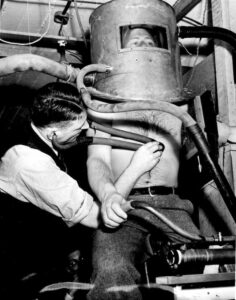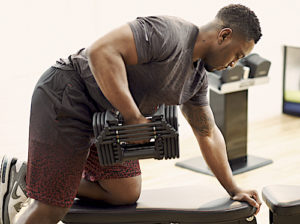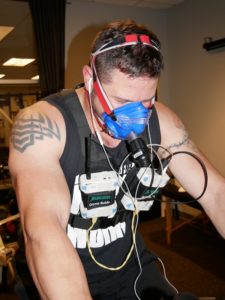Changes in Motivation & Research
There are rare but critical changes in focus, application, and terminology in sports and exercise science. This affects everything from exercise product development to how programs are advertised to you as the consumer.

As science has demonstrated that activity has a role in improving health, the research has expanded to reflect this additional path. It’s not that exercises like group cycling classes and circuit training with weights don’t work. It is just that other things contribute as well.
The movement total in a week is a strong predictor of health benefits. Exercise is thought of as something artificial in nature like weight training or running. It has an underlying tone of moderate difficulty or intensity. On the flip side, activity generally includes movement that could be more formal, like casual walking or riding your bike down the trail with no specific speed or difficulty in mind. The activity also has a start-stop-start nature. Exercise like a group cycling class is continuous.

From a historical perspective, getting exercise got a considerable boost over 40 years ago because the amount of activity Americans were getting weekly was in steep decline. Another factor was the increase in coronary heart disease and associated conditions. Activity or exercise, the population was getting less and less every year.
Exercise science went with the flow, and there was more investigation of the exercise end of the scale than the activity end. The recent guidelines of 150+ minutes of moderate-intensity exercise or activity per week to impact health was a result of these observations. There has been increasing emphasis on studying activity because activity below that threshold can also impact health. It’s just slower to accumulate the necessary minutes per week. Studying sports performance had a similar research path. Basically, how much did what.

One of the concepts started 20 years ago was “wellness.” The definition is ambiguous, yet an easy definition is people being proactive about health. As time has passed, things that take more work to define and categorize fall off the usability scale. When you understand what it is, the term has application. However, it is difficult to understand what wellness is and how to apply it to positive change.
How research uses keywords is an excellent window of the changes in research and application direction concerning improving health and performance. The keywords used to describe research at the 2023 American College of Sports Medicine annual meeting indicate shifts in thinking about what to study, how things impact the population, and how to explain and name those areas.

Wellness as a term is on the decline. This year at ACSM, only 34 of 2,500 presentations used that as a descriptive term. Five years ago, there were almost 300 presentations using this termn. Rising in response is the term “health,” which was used for 869 presentations. People relate much better to health than to wellness. This also correlates with the idea that everything in some respect can contribute to health on the activity-to-exercise scale. And when there is a chink in the health armor like heart disease, the person gets additional motivation.
The descriptor “wellness” will continue to suffer a further decline in usage. Not because it isn’t true, but being difficult to define means it is also tricky to apply quickly. Take charge of your health is a better phrase than wellness. Based upon how advertising has gone over the last three years for specialty drugs, those that treat anything from diabetes to itching, the public has the idea of self-direction to impact health. In certifications and training, the Well Coach has been replaced by the Health Coach.
Did the Wellness emphasis produce health results? Since the term was popularized, the answer is mostly no and a little bit of not really. During this time, the number of obese in the US climbed to an all-time high, 38% higher as a reflection of the total population than when Wellness was adopted as a popular phrase. Diseases such as diabetes and metabolic syndrome had similar increases as an affected percentage of the population.
Sports declined to 286 presentation descriptors this year. Sports is still essential in research, yet activity increased to 534 presentation descriptors while 1100 used exercise. What does the change in terminology mean for you, the health consumer?

Under the surface, the most important health goal in terms of movement is burning 4,500 kilocalories per week in all forms of movement as the threshold. Because of the general equation nature of steps, it is almost impossible to translate steps into kilocalories. Pedometers and phones aren’t sophisticated to the point that they understand various movements and their total. Like Mr. Rogers and the neighborhood, you get a direction rather than precision.
Health is best achieved with a combination of movement: activity, exercise, and sports. Activity will work to improve health, just with a very high volume or number of minutes. Exercise and sports will also improve health, yet for some, the intensity demands and thresholds needed are just too high and uncomfortable. The power-packed nature of moderate exercise frees up time, which is essential to consider. And occasional, higher-intensity activity like group cycling has been shown to also retard aging, so it is wise to include this on occassion.
Another relationship to consider is that activity will minimally affect fitness levels, or how we measure effects. Increased fitness in certain areas, like VO2 Max (your endurance), is positively correlated with health and longer lifespan. An activity like walking does not have the intensity to make substantial fitness gains. It can improve health, but not as much as something with more intensity or difficulty. The public is getting more educated about these concept differences along this continuum of activity versus benefits. Fitness level changes are one potential result of activity, from informal to exercise to sports.

The terminology is already changing concerning research keywords and concepts. Health is the most recognizable benefit of lifestyle and activity. With more intensity in the activity, formal exercise improves specific fitness levels, and health. Fitness is the result, not the action.
Sports will continue to be a research focus with one caveat. Recreational sports, which might be competitive but are less rigorous or demanding than college or professional participation, will continue to gain participation. The reason is simple: good health and fitness benefits per unit of time, plus mental and social benefits. Performance research will continue because of societal importance of this form of sports participation.
Performance parameters have their specialized research directions in training- injury rates, recovery, and mental/social factors will all continue to be research and information topics.
Research from one realm may not translate to another. For example, the movement patterns and energy expenditure of college basketball players are not likely to be indicative of an informal, pick-up, adult league at the YMCA. Results are about time, intensity, and duration of the activity. These differences become apparent when we look at activities up to college and professional sports. No wonder there are different health and fitness results along the spectrum.
The words you will hear more and more are:
Activity
Health
Fitness
Exercise
Sports
Performance
They denote different benefits per unit of time. We are two years away from an accepted equation of how they fit together for levels of health benefit.

